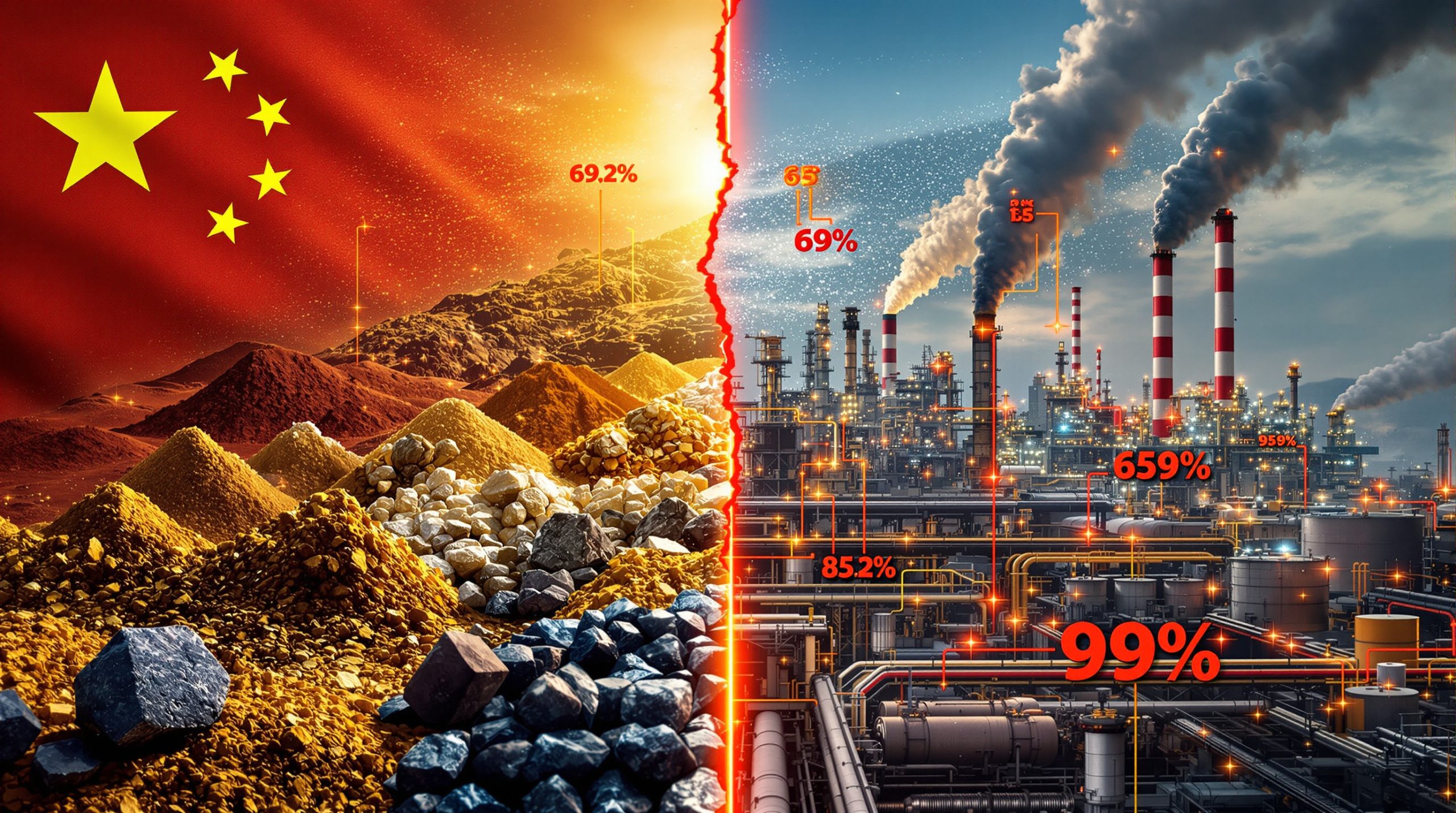Resource disputes between investors and states represent complex legal conflicts that emerge when foreign investors challenge government actions affecting their mining, energy, or natural resource investments. These disagreements typically arise through the Investor-State Dispute Settlement (ISDS) mechanism, where private companies can directly sue sovereign nations for alleged treaty violations or regulatory changes that impact their operations. The recent Paladin Energy halt in Namibia exemplifies how policy changes can trigger such conflicts.
Understanding the ISDS Framework
The ISDS system operates through international arbitration tribunals, allowing foreign investors to bypass domestic courts when seeking compensation for government actions they consider harmful to their investments. This mechanism relies on bilateral investment treaties (BITs) and multilateral agreements that both parties must have previously ratified.
Furthermore, the International Centre for Settlement of Investment Disputes (ICSID) has administered over 900 cases since its establishment in 1966, with resource-related disputes representing a substantial portion of international investment arbitration. Approximately 2,600+ bilateral investment treaties are currently in force globally, creating overlapping dispute mechanisms across multiple jurisdictions.
The standard three-member tribunal structure comprises one arbitrator selected by the investor, one selected by the state, and one president selected by mutual agreement or institutional rules. This composition aims to balance representation, though critics note potential conflicts of interest given arbitrators often represent parties in subsequent cases.
Why Are Resource Disputes Reaching Record Levels in 2025?
The surge in resource disputes between investors and states has reached unprecedented levels, with 32 disputes filed in 2025 through ICSID as of November, already exceeding the entire 2024 total. This dramatic increase reflects multiple converging pressures reshaping the global resource landscape.
Critical mineral demand has intensified competition between major powers, while environmental regulations increasingly conflict with existing investment frameworks. The race for battery metals and rare earth elements has created new friction points between investors and resource-rich nations. Additionally, the Trump mining order demonstrates how policy changes at the highest levels impact global mining investments.
Key Statistics:
- 32 disputes filed in 2025 (surpassing 2024's total)
- 17 cases (53% of new filings) involving oil and gas assets
- 11 disputes (34% of filings) concentrated in Latin America
- Colombia leads with 4 individual cases (12% of global total)
Geographic Distribution of Current Conflicts
The regional breakdown of disputes reveals significant concentration in specific areas experiencing policy transitions and resource nationalism pressures:
| Region | Number of Disputes | Percentage | Primary Sectors |
|---|---|---|---|
| Latin America | 11 | 34% | Oil, gas, lithium, coal |
| Africa | 10 | 31% | Critical minerals, copper, cobalt |
| Europe/Central Asia | 8 | 25% | Energy, mining |
| Other regions | 3 | 10% | Various |
The concentration in Latin America reflects broader regional tensions over resource governance, particularly following presidential policies targeting mining areas as natural reserves and export restrictions that create uncertainty for existing investors.
Which Sectors Drive the Most Investment-State Conflicts?
Oil and Gas: The Dominant Dispute Category
Fossil fuel companies remain the most frequent claimants in international arbitration, accounting for 53% of all resource-related disputes in 2025. These conflicts often emerge when governments implement climate policies, environmental restrictions, or nationalisation measures affecting hydrocarbon projects.
The persistence of oil and gas disputes reflects structural factors: these sectors represent massive capital investments with long project timelines (15-30 years), making them vulnerable to political transitions and policy reversals. Typical capital investment ranges from USD $2-5 billion per major project, with development timelines of 7-10 years from exploration to production.
Climate-motivated policy changes directly threaten project economics, incentivising investors to pursue arbitration claims. License terms typically span 25-30 year production periods, meaning policy changes can affect decades of planned operations.
Critical Minerals: The Emerging Battleground
The race for battery metals and rare earth elements has created new categories of disputes as governments balance decarbonisation goals with existing fossil fuel investments. Countries implementing strategic mineral policies now face significant arbitration risks, as evidenced by ongoing uranium market volatility.
Mexico's Lithium Nationalisation serves as a prominent example. In October 2022, Mexico nationalised its entire domestic lithium mining sector, transferring operations to the state-owned enterprise Comisión Federal de Electricidad (CFE). This action affected existing concession holders with development projects and generated multiple documented investment disputes.
Critical minerals disputes have emerged due to:
- Recent policy shifts: Many countries have only recently implemented nationalisation or regulatory changes around battery metals
- Strategic urgency: Governments view mineral access as national security imperatives rather than purely commercial concerns
- Supply chain pressure: Competition between major powers creates aggressive government intervention in mineral sectors
Traditional Mining Sectors Under Pressure
Gold, uranium, and base metals continue generating conflicts as governments balance resource sovereignty with foreign investment obligations. These sectors face shorter development timelines (3-7 years) but rapid policy evolution as regulatory frameworks remain in flux in many jurisdictions.
The broader context of critical minerals and energy transitions adds complexity to these traditional disputes.
How Do Environmental Regulations Trigger Resource Disputes?
Climate Policy vs. Investment Protection
Environmental regulations generate disputes through a fundamental legal conflict: international investment treaties protect investor expectations and established business operations, while environmental laws implement new restrictions based on evolved understanding of ecological impacts.
When new environmental requirements retroactively affect existing projects, investors claim treaty violations through the fair and equitable treatment (FET) mechanism. This tension arises because most bilateral investment treaties were negotiated before climate change and biodiversity concerns became central to government policy.
Legal Frameworks in Environmental Disputes
Investors typically frame environmental regulations as FET violations using three legal theories:
- Legitimate Expectation Doctrine: The investor relied on regulatory conditions existing when investing; new environmental rules violate those expectations
- Non-Discrimination Claim: Environmental rules apply differently to foreign versus domestic investors
- Expropriation Theory: Environmental restrictions render the investment economically non-viable, constituting de facto expropriation
Environmental defences typically available to states include:
- Police Powers Doctrine: States retain inherent sovereignty to regulate for public health and environmental protection
- Proportionality Analysis: Environmental benefits must be weighed against investor impact
- Regulatory Evolution Defence: Environmental laws reflect legitimate policy evolution, not arbitrary treatment
Case Study Examples
Successful State Defence – Cortec Mining v. Kenya:
Kenya successfully defended the cancellation of a mining licence after Cortec Mining sought to mine titanium in Kwale County. The Kenyan government cancelled the licence citing environmental non-compliance and concerns about water resources in an arid region. The ICSID tribunal upheld Kenya's right to cancel the licence based on environmental protection justifications, recognising the state's legitimate interest in environmental preservation.
Investor Victory – Técnicas Medioambientales Tecmed v. Mexico:
A US-Mexican joint venture sought to renew a permit for a hazardous waste facility in Mexico. The Mexican government denied renewal citing environmental and public health concerns following years of resident protests. The tribunal found Mexico violated fair and equitable treatment by denying permit renewal, awarding USD $5.4 million compensation while acknowledging legitimate environmental concerns existed.
What Role Does Resource Nationalism Play?
Strategic Asset Control
Countries increasingly view critical mineral deposits as strategic national assets requiring greater state oversight. This shift reflects growing awareness of these resources' importance for technological advancement, national security, and economic sovereignty.
Resource nationalism has intensified due to US-China competition for critical mineral access. Both nations have implemented strategic minerals initiatives:
- United States: Established the Critical Minerals Strategy (2022) emphasising supply chain security for battery metals, rare earths, and semiconductors
- China: Controls approximately 70% of global rare earth processing capacity and maintains significant stakes in African and Latin American mining operations
Colombian Policy Implementation
Colombian President Gustavo Petro implemented several policy measures in 2023-2024 affecting investor interests, contributing to Colombia's position as the country with the highest number of new disputes (4 cases) in 2025:
- Designated several mining areas as temporary natural reserves
- Implemented complete fracking ban
- Threatened coal export restrictions to specific countries
- Created investment uncertainty for existing licence holders
These policy changes directly motivated investor disputes filed against Colombia, representing 40% of the global increase in dispute filings attributed to single-country policy changes.
Policy Tools and Investor Reactions
Common Resource Nationalism Measures:
- Temporary natural reserve designations
- Export restrictions or bans
- Increased state participation requirements
- Revised royalty and taxation frameworks
- Local processing mandates
These policy changes often conflict with existing investment treaty obligations, creating fertile ground for international arbitration claims. The threat of costly arbitration may discourage governments from implementing stronger environmental protections, a phenomenon known as regulatory chill.
How Does the ISDS Process Actually Work?
Step-by-Step Arbitration Timeline
The international arbitration process follows a structured timeline that can extend over several years:
- Notice of Arbitration: Investor formally notifies the state of their intent to pursue claims
- Tribunal Formation: Three-member panel selected through agreed procedures
- Preliminary Objections: State may challenge jurisdiction or admissibility
- Evidence Phase: Document production and witness testimony
- Final Hearings: Oral arguments before the tribunal
- Award Issuance: Binding decision with potential damages
Institutional Framework Distribution
Different institutional rules govern investor-state disputes:
- ICSID Rules: Govern approximately 30% of investor-state disputes
- UNCITRAL Rules: Govern approximately 35% of investor-state disputes
- Other institutional rules: Including Stockholm Chamber of Commerce, International Chamber of Commerce (ICC)
While full arbitration dominates headlines, mediation and settlement negotiations resolve many disputes before reaching final awards. These alternatives can preserve ongoing business relationships while addressing investor concerns.
Which Countries Face the Highest Risk of Resource Disputes?
Latin American Hotspots
Colombia's leadership in current disputes reflects broader regional tensions over resource governance. The concentration of 11 disputes (34% of global filings) in Latin America demonstrates how political transitions affecting resource policies create elevated dispute risks.
Regional Risk Factors:
- Political transitions affecting resource policies
- Indigenous rights considerations
- Environmental protection priorities
- Revenue redistribution pressures
Mexico accounts for 2 cases following its 2022 lithium nationalisation, while Ecuador and Panama each contribute additional disputes, highlighting the regional pattern of resource policy conflicts.
African Critical Mineral Producers
Africa accounts for 10 disputes (31% of global filings), involving countries rich in strategic minerals: Niger, Tanzania, the Democratic Republic of Congo, Mali, Morocco, and Senegal.
The Democratic Republic of Congo exemplifies how countries rich in strategic minerals navigate competing international partnerships. The DRC houses critical minerals including cobalt, copper, lithium, and manganese, making it a target for many countries and investors.
Recent developments illustrate the geopolitical dimensions: Australia-based AVZ Minerals reported in July 2025 that a new deal between Kinshasa and US-backed KoBold Metals to develop part of a lithium project breached an international arbitration order, demonstrating how competing nations' investors pursue aggressive arbitration strategies.
Emerging Risk Indicators
Countries implementing rapid policy changes in resource sectors face elevated dispute risks, particularly when:
- New governments reverse previous investment commitments
- Environmental regulations retroactively affect existing projects
- Strategic mineral policies conflict with treaty obligations
- Competing international partnerships create policy uncertainty
What Are the Financial Implications of Resource Disputes?
Award Amounts and Settlement Values
Resource disputes generate enormous financial consequences, with legal costs and potential damages creating significant exposure for both parties. Even unsuccessful claims impose substantial costs on both investors and states.
Typical Cost Categories:
- Legal representation and expert witnesses
- Tribunal fees and administrative expenses
- Opportunity costs from delayed projects
- Reputational impacts on investment climate
Verified awards demonstrate the scale of potential exposure. The Técnicas Medioambientales Tecmed v. Mexico case resulted in USD $5.4 million compensation, representing a mid-range outcome for environmental disputes.
Furthermore, market volatility affects dispute calculations, as seen with US uranium disruption creating additional complications for valuation assessments.
Impact on Future Investment Flows
High-profile disputes influence investor confidence in entire regions or sectors, potentially reducing foreign direct investment in resource development projects. The concentration of disputes in specific regions creates reputational effects that extend beyond individual cases.
The record 32 disputes filed in 2025 signal elevated systemic risk in the global resource investment landscape, potentially affecting capital allocation decisions for future projects.
How Are Reform Efforts Addressing System Criticisms?
Transparency and Accountability Improvements
Growing criticism of ISDS has prompted reform initiatives focusing on procedural improvements:
- Public access to arbitration proceedings
- Arbitrator codes of conduct addressing conflict of interest concerns
- Consistent interpretation of investment obligations
- Appeals mechanisms for erroneous decisions
These reforms aim to address legitimacy concerns while maintaining investor protection mechanisms essential for international capital flows.
Multilateral Investment Court Proposals
Some jurisdictions explore permanent investment courts as alternatives to ad-hoc arbitration, potentially providing greater consistency and legitimacy in dispute resolution. These proposals attempt to address concerns about arbitrator conflicts of interest and inconsistent interpretation of similar legal issues.
Balancing Competing Objectives
Key Reform Objectives:
- Preserve legitimate investor protections necessary for international investment
- Protect government regulatory authority for public policy implementation
- Ensure climate policy compatibility with investment obligations
- Reduce system costs and procedural delays
Reform discussions recognise the fundamental tension between investor protection and regulatory sovereignty, particularly as governments implement climate policies that may conflict with existing fossil fuel investments.
What Does the Future Hold for Resource Investment Disputes?
Technology and Energy Transition Impacts
The global shift toward renewable energy and electric vehicles will likely generate new categories of disputes as governments balance decarbonisation goals with existing fossil fuel investments. The 17 oil and gas disputes filed in 2025 (53% of total) suggest this tension will persist.
Critical minerals will become increasingly important as battery technology advances and electric vehicle adoption accelerates. Countries controlling strategic mineral deposits face growing pressure to implement nationalist policies while managing treaty obligations to foreign investors.
Geopolitical Competition Effects
US-China competition for critical mineral access intensifies disputes in resource-rich developing countries, as competing powers offer different investment and partnership models. The emergence of 8-10 critical minerals disputes in 2025 (25-31% of resource-related filings) demonstrates this trend's acceleration.
Countries like the Democratic Republic of Congo must navigate competing partnerships while managing existing investor obligations, creating multiple potential conflict points.
Regulatory Evolution Expectations
International investment law continues evolving to better accommodate environmental protection and climate policy objectives while maintaining investor confidence. The Paris Agreement's climate commitments create ongoing tension with investment treaties predating climate policy frameworks.
Future dispute patterns will likely reflect:
- Increased environmental regulations affecting existing resource projects
- Strategic mineral nationalism as supply chain security concerns intensify
- Technology sector disputes as digital infrastructure becomes strategically important
- Renewable energy conflicts as governments phase out fossil fuel operations
Navigating Complex Investment Landscapes
Resource disputes between investors and states reflect fundamental tensions between national sovereignty and international investment protection. The record 32 disputes filed in 2025 demonstrate these conflicts' intensification as the world transitions toward sustainable energy systems while competing for strategic minerals.
Understanding these dynamics becomes crucial for investors, governments, and legal practitioners navigating an increasingly complex regulatory environment where environmental imperatives, resource nationalism, and investment protection must somehow coexist.
The 11 disputes concentrated in Latin America and 4 cases in Colombia alone highlight how regional policy changes can generate systemic investment risks. Similarly, the 10 African disputes involving critical mineral producers demonstrate how strategic resource competition creates new categories of investment conflicts.
The resolution of current disputes and evolution of international investment law will significantly influence how quickly countries can implement climate policies while maintaining the foreign investment necessary for sustainable development. As environmental regulations increasingly conflict with existing investment frameworks, the legal system must adapt to balance competing priorities.
According to recent analysis by Reuters, these conflicts have reached a ten-year high, reflecting broader systemic tensions in global resource governance. Additionally, Mining Weekly reports similar findings, emphasising the industry-wide implications of these disputes.
Disclaimer: This analysis is based on publicly available information and should not be construed as legal or investment advice. Investment disputes involve complex legal issues that require professional consultation. Statistics and case outcomes may change as additional information becomes available or as proceedings conclude.
Further Exploration:
Readers interested in learning more about international investment disputes can explore additional educational content from legal research institutions and international arbitration organisations that provide broader context on ISDS mechanisms and reform initiatives.
Could Resource Disputes Signal New Mining Investment Opportunities?
While resource disputes create uncertainty, they also reveal which regions and commodities governments consider strategically valuable. Discovery Alert's proprietary Discovery IQ model instantly identifies significant ASX mineral discoveries, helping investors navigate market volatility and capitalise on emerging opportunities before broader market awareness develops. Begin your 30-day free trial today to stay ahead of geopolitical shifts affecting global mining investments.




